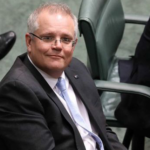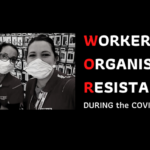Should Australia ‘Shut Down’ for 30 Days?

Prime Minister Scott Morrison has announced a major boost to social security recipients and for those who lose their jobs as a result of the COVID-19 pandemic, which represents a turnaround from its previous determination not to increase the Newstart allowance.
After declaring last year that the ‘the best form of welfare is a job’, the PM is now having to swallow those words as his Government comes to the realisation that sometimes, circumstances are out of people’s control, and gainful employment is not always attainable.
Of course, these are unprecedented times, but what is being hailed as ‘one of the largest increases to social security benefits in Australia’s history’, requiring the government to spend $14 billion over six months. This couldn’t have come at a more welcome time, particularly as Australia also copes with the economic impact of recent droughts, bushfires and floods too.
But many believe that in addition to these measures, Australia should follow the lead of other nations such as New Zealand by ‘shutting down’ the nation for a month by implementing what are known as ‘level 4 measures’ – which involves ceasing all non-essential services, essentially resulting in most businesses either having their employees work from home or, if this is not possible, not working at all over that time.
The ‘Coronavirus supplement’
In a bold move, the government is establishing a new time-limited coronavirus supplement to be paid at a rate of $550 per fortnight for the next six months.
This will effectively double the current rate of Newstart, which is being renamed the jobseeker payment. (The rebranding was already under way.) and eligible income support recipients will receive the full amount of the $550 coronavirus supplement on top of their payment each fortnight. It’s available for existing and new recipients of the jobseeker payment, youth allowance jobseeker, parenting payment, farm household allowance and special benefit and will be paid on top of these fortnightly payments.
The government will also waive the asset test in many cases along with waiting periods. What’s more it has expanded both Jobseeker Payment and Youth Allowance Jobseeker criteria to provide payment access for permanent employees who are stood down or lose their employment; sole traders; the self-employed; casual workers; and contract workers – this could also include someone who needs to stop work to care for someone affected by the Coronavirus.
The $750 payment
In the first package, the government announced that 6.5 million lower-income Australians would receive a one-off $750 payment. The payment – which will be made from 31 March – will be made to all social security, veteran and other income support recipients and eligible concession card holders. This includes those on Newstart, those who have commonwealth seniors health cards, and families receiving family tax benefits.
This second payment will be made automatically from 13 July 2020 to around five million social security, veteran and other income support recipients and eligible concession cardholders.
This won’t be available if you get the coronavirus supplement, but if you are eligible, you will receive the payment automatically.
Tap into your Superannuation
Under the changes announced in the second package, the government will allow individuals “in financial stress” as a result of the coronavirus downturn to have limited access to their superannuation savings, capped at up to $10,000 in 2019-20 and a further $10,000 in 2020-21.You can apply online through MyGov for access to your super but must do so before 1 July 2020. Any money released will be tax free and won’t affect Centrelink or veterans’ affairs payments.
Aged pensioners and retirees
The Government is also introducing changes that will affect self-funded retirees and people who receive the aged-pension, enabling them more cash at this time.
Students
It has also been announced 230,000 full time students will have their benefits increased by $550 per fortnight.
Concerns and lack of clarity
Some concerns do, however, remain about the job seeker payment (formerly Newstart). Given the financial boost is only for a limited time – what happens after 6 months – do recipients go back to living on less than $40 a day?
Most of these payments can be accessed online, and the government says the application process will be streamlined. But, given the automation of the system, people are also naturally concerned in the wake of mistakes, miscalculations and confusion created by ‘Robodebt,’ whether Centrelink’s processes and procedures will be sophisticated and robust enough to cope with the significant influx of demand expected over the coming weeks, as thousands of Australians access Centrelink, many for the first time in their lives.
After axing thousands of jobs in recent years, employing short-term contractors instead, the Government has now pledged an additional 5,000 staff to Services Australia, which runs Centrelink to be able to meet the needs of Australians engaging with the Centrelink service.
A complete shutdown?
And while the measures are welcomed by many, the voices calling for a nationwide shutdown of essential services, such as that being implemented by New Zealand for 30 days, seem to be increasing – the reasoning being that such a measure could result in a shorter period of economic crisis.







